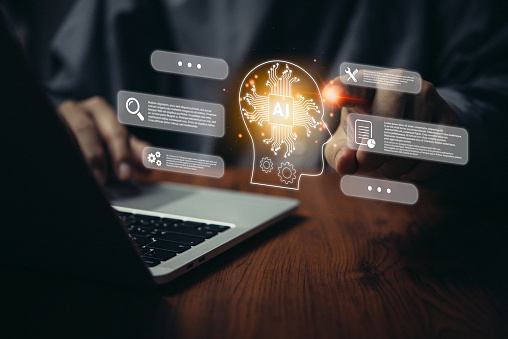
Generative AI: A new era of innovation in financial services
Impact on financial services
The financial services industry has to constantly contend with shifting KPIs, fierce competition, changing business needs, rapid technological evolution, and economic pressures. Automating and optimising processes and shortening the development cycle of products, services and features to reduce time-to-market is an imperative. And here’s where Gen AI comes in: its potential can be unleashed to revolutionise the way financial institutions operate, empowering them with unmatched insights, and enhanced self-service capabilities.
Gen AI has the ability to step up the status quo in financial services by automating routine tasks, optimising operations, empowering them to make data-driven decisions with greater precision and confidence, and personalising customer experience. The good news is, this is just the tip of the iceberg — the possibilities are enormous and will evolve further as the technology matures.
The case for enterprise level Gen AI adoption in the financial services industry is clear. However, impediments around accuracy, copyright infringement, data security, and regulatory ambiguity must be overcome before developing and deploying solutions.

Gen AI evolution in financial institutions
The adoption of Gen AI and LLMs demands training and customisation of the foundational model to align it with the enterprise context and knowledge. Successful implementation will depend on a clear understanding of context, (re)training requirements, and impediments. Identifying the right set of business use cases is important but other considerations too will play a critical role in enterprise wide adoption.
From a technology and implementation perspective, choosing the right model (traditional or Gen AI), technology (open source or proprietary), and deployment method (on-premise or cloud) are important considerations. This must be supported by efficient model management across design, development, and training. Striking the right balance between near-term gains and long-term benefits is vital.
While the adoption of LLMs in the managed services model has emerged as the preferred choice for financial institutions, is it the future? Some mature financial institutions are exploring the bring-your-own-model concept to determine the right way forward—either build an LLM from scratch or finetune an existing one to the extent that it becomes enterprise-native. These questions will need to be addressed before embarking on implementation. We believe that financial institutions must leverage a combination of pre-trained and custom Gen AI models (built atop pre-trained ones) for generic and specific tasks.
Financial institutions are following two approaches to operationalise Gen AI
Purpose-centric approach: Specific, low-risk use cases are chosen where Gen AI can deliver tangible results. This approach allows financial institutions to explore, learn incrementally, assess the impact, and iterate based on feedback. Over time, it helps refine the Gen AI models, demonstrate business value, and strengthen governance. This approach helps firms choose the right model, adhere with best practices across engineering techniques and model training, discover the differential value-add from the end solution to the customer, and identify critical operational and change management aspects needing attention. Though this approach introduces silos and is comparatively more near-term, it delivers insights on building a strong AI foundation; however, we expect financial institutions to progress quickly from purpose-centric to a platform-driven approach.
Platform-driven approach: As financial institutions progress in Gen AI adoption, use of standardised platforms will see a rise, which will help eliminate silos. This is a more mature approach spanning efficient data management, governance, security, and the responsible use of AI. Financial institutions must leverage learnings from the purpose-centric approach to define policies and help build comprehensive guardrails to meet their individual needs. The decision on whether to choose on-premises fine-tuned open source LLMs or cloud based LLMs will depend on enterprise appetite in handling the infrastructure, cost, and usage. In our view, embracing a platform-driven approach is the way forward — this is being corroborated by a few financial institutions who are adopting Gen AI through this approach.
Regardless of the approach adopted, financial institutions must ensure rigorous testing and human oversight of the models to detect bias and hallucinations. Better accuracy will help establish fairness (responsible AI), transparency, and explainable outcomes (explainable AI), eliminating bias, hallucinations, and toxicity which could harm the reputation of financial institutions.

Gen AI adoption will soon become mainstream in the financial services industry. Ethical use without causing harm will demand guardrails in the form of policies across compliance, security, testing, legal issues and more. For financial institutions, maximising business value will require controlled, democratised use of Gen AI through the right infrastructure, technology platform, and culture.
LeackStat 2023
